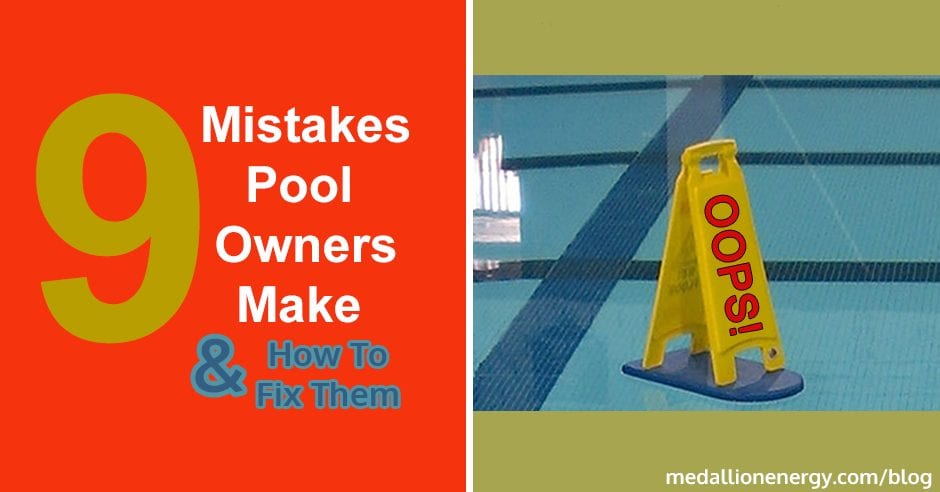There a few common mistakes pool owners make when it comes to pool maintenance. Mistakes that could be costing you time and money.
Curious to find out what they are and how to fix them?
Keep reading
If you own a swimming pool, then you already just how great it is — the convenience of having a cool, refreshing, and healthy source of recreation right in your backyard. A personal Oasis to cool off from the summer heat, or a peaceful retreat for warm midnight swims in fall.
From quick morning dips to summer pool party games, swimming pools open the door to a world of bliss. But, with pool ownership, comes pool maintenance.
Balancing your water, keeping it clean, warm, and of course, properly circulated — owning a pool is a responsibility for sure. Of course, pool maintenance can be a breeze if you use all the right pool care hacks.
That said, there are still a few common mistakes that pool owners make with pool maintenance. Not major, irreversible mistakes, but simple habits that usually make pool maintenance much harder than it needs to be.
And in addition to making pool maintenance harder, these mistakes typically end up costing pool owners more money in chemical and energy costs as well.
Luckily, these bad habits are easy to replace with good habits. Habits that will make your life easier as a pool owner.
So keep reading to learn about some common mistakes pool owners make, and how to correct them in no time.
9 Common Mistakes Pool Owners Make
& How To Correct Them
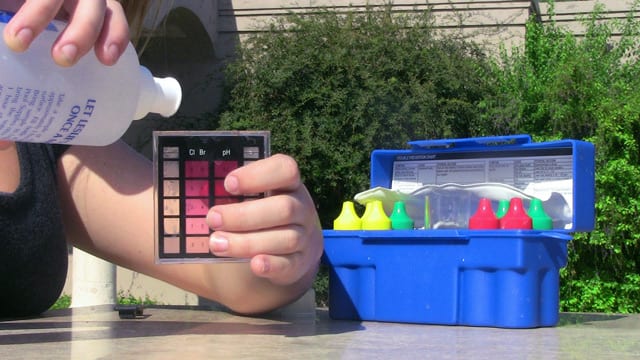


Not testing your water often enough
Testing the water is one of those things you know you should be doing, but most often ends up slipping your mind.
It’s not because you don’t want to do it, or that you don’t care. Sometimes, it’s just easy to forget. Hence why it’s best to start small when forming the habit.
So to make things easier for yourself, just pick one day out of the week for testing your water. The whole process should only take about 10 minutes, but the amount of time you’ll save by forming this habit is the true reward.
As you know, balancing your water is typically harder the longer pool chemicals are left unmanaged. Everything from rainfall to bodily oils from swimmers can throw off chemical levels and make your water unbalanced. And the longer the water is left untested and untreated, the more chemicals will be needed to bring it back to normal.
But if you’re testing and balancing your water at least once a week, then there’s a much smaller window of opportunity for chemicals to get out of balance. So do yourself a favor, save some time (and money), and take a few minutes to check up on your water.
Of course, there are benefits to testing your water more than once a week, which is easy to do with a pool care schedule.
[Wondering what chemicals to test for? Check out this post: Understanding Pool Chemistry]
Not shocking the pool correctly
Shocking your pool is a great way to keep sanitization in order while minimizing the amount of chemical maintenance needed per week.
But what’s more important than shocking your pool, is shocking your pool correctly. From the time of day to the amount of shock used and how it’s applied, all these factors control how effective your shock treatment is.
And if you’re spending money on pool shock regularly, then it’s in your best interest to get the most out of it.
Here’s how to shock your pool the right way:
- Shock your pool at least once per week, or when your Total Chlorine is higher than your Free Chlorine
- Apply the shock at night time, as sunlight burns up chlorine and greatly reduces its effectiveness
- Run your pump (at night) for at least 8 hours to ensure good distribution
IMPORTANT TIPS:
- Pre-dissolve shock in a bucket with water BEFORE adding to pool
- Do NOT add shock directly to your skimmer (especially if you use a chlorine generator)
For a full explanation on shocking your pool, check out this post:
How To Shock Your Pool in 4 Simple Steps
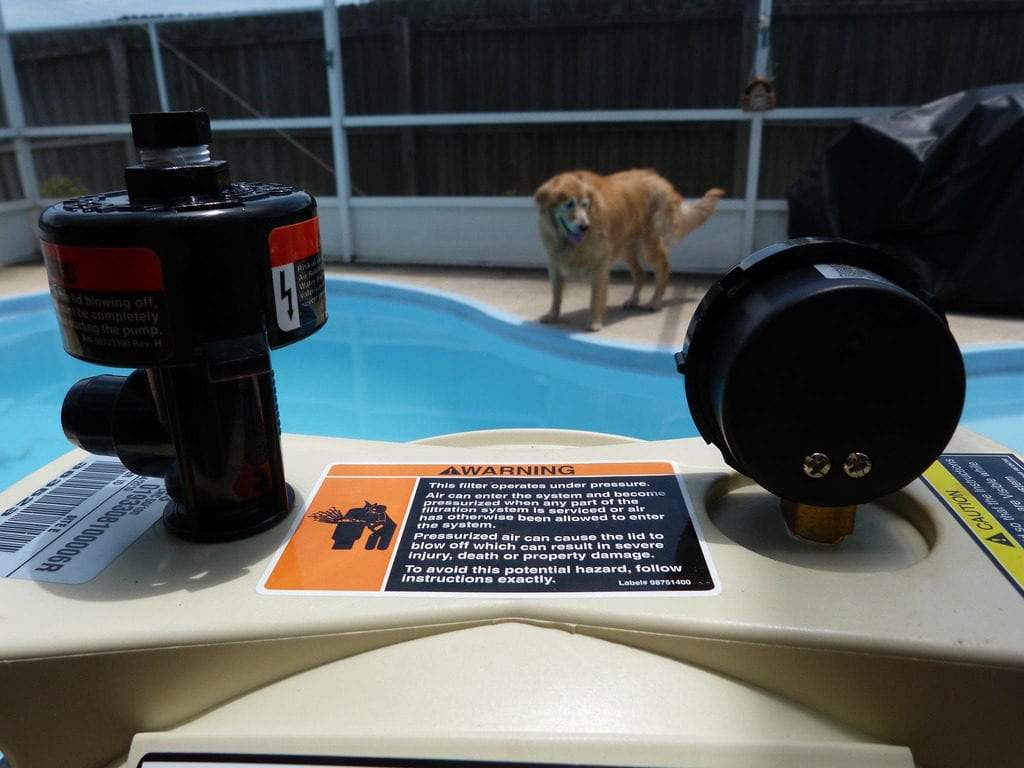


Not running your filter long enough
We were just mentioning the importance of running your filter after a shock treatment. But even when you aren’t doing a shock treatment, good filtration is essential. The last thing you want to do is run it only when you expect to swim — that’s one of the most common mistakes pool owners make.
Although logical in theory, running your filter less actually ends up costing you more.
How?
Well, when you run your filter/pump, you promote healthy water circulation, which on top of distributing chemicals, helps keep your water clean. But whenever you’re not running it, you’re losing out on these benefits.
And then what happens?
You have to run your filter twice as much and add way more chemicals to get everything back to normal. A habit that can quickly cost your more than simply running the pump on a schedule.
So for the best results, run your pump at least 8 hours a day. And if you want to maximize energy efficiency, then run it at nighttime.
This not only helps conserve and distribute chemicals more effectively, but it also helps you avoid peak energy use hours. That’s the time frame where electric companies charge the highest rates for electricity, and it’s usually throughout the daytime when everyone is most active.
[Learn more energy saving tips for your swimming pool here]
But you know what’s just as important as remembering to run your filter?
Forgetting to clean the filter
Your filter is your best friend when it comes to keeping your pool clean.
Treat your filter well, and pool maintenance is a breeze. But neglect it, and you’ll be reaching for your skimmer, pool brush, and vacuum a lot more often.
Your pool filter processes hundreds of gallons of water per day, filtering out the impurities and contaminants that would otherwise be hanging out in your water. But as great as filters are at keeping your water clean, they do have a limit. Because all that stuff needs to end up somewhere right?
Well, it ends up in the filter media (cartridge, sand, de grid). And over time, as your filter gets dirtier, it loses its effectiveness.
Naturally, this leads to less clean water, but the worse side effect is what you don’t see, and that’s the added strain a dirty filter puts on your pool system. A clogged up filter makes it harder for water to pass through, which not only affects circulation but increases the PSI of your pool system, making your pump work twice as hard to keep everything going.
So basically, when you forget to clean the filter, you end up with dirtier water and a lot more wear and tear on the pool system as a whole. But you can easily avoid both by keeping your filter clean.
But you can easily avoid both by keeping your filter clean.
Here are some helpful resources on that:
How To Clean/Replace a DE Filter
How To Clean/Replace a Cartridge Filter
How To Clean/Replace a Sand Filter
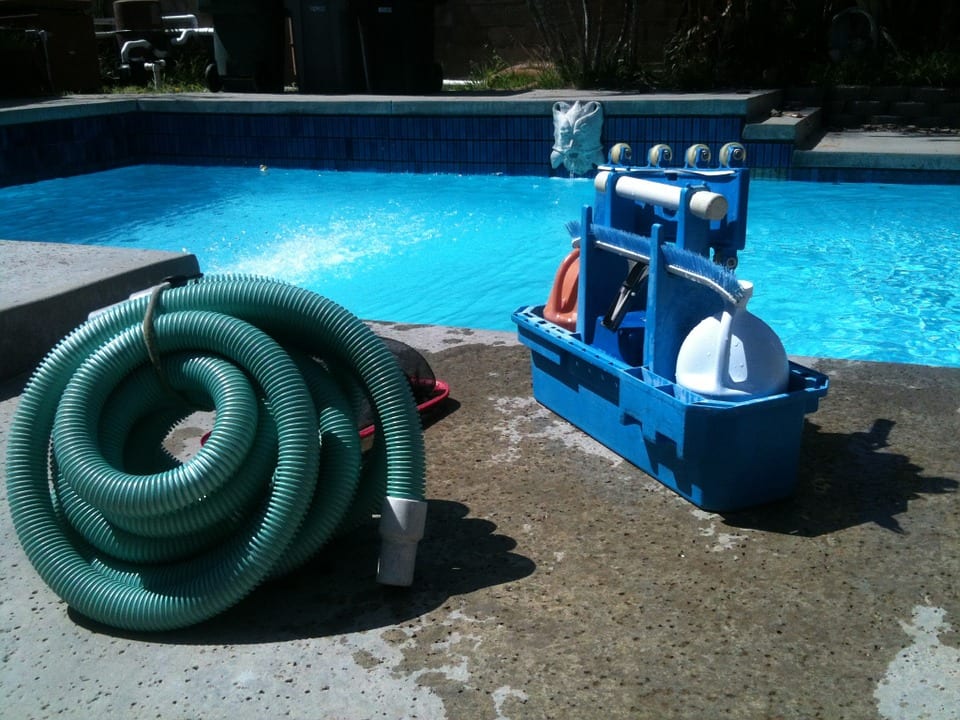


Forgetting to brush, skim, and vacuum the pool
We wish we could tell you that keeping your filter clean is enough, but this power trio is just too essential to not be mentioned in this post. Forgetting to clean the pool, or not cleaning it enough is easily in top 3 of common mistakes pool owners make. And that’s because, for many, the need to clean a pool is largely dependent on how clean it looks.
But nearly every pool, regardless of apparent cleanliness, can benefit from a full cleaning at least twice a week.
Here are a few reasons why:
- Brushing your pool walls helps you tackle all the hard to reach spots your filter can’t cover
- Scrubbing the walls get rid of any buildup that has formed and helps prevent algae infestations
- Skimming your water means less debris ending up in the skimmer, filter, and at the bottom of your pool (less strain on the system all around)
- Vacuuming your pool takes care of what’s leftover from scrubbing the walls, and keeps the pool floor clean
- Doing all three creates a healthier pool, which means cleaner water, better chemical distribution, optimal circulation, and improved energy efficiency
Of course, no is saying you have to do all this pool maintenance yourself.
In fact, if the idea of getting something else to handle all the work for you sounds good, then you might want to check out these 11 ways to automate pool maintenance.
Not keeping track of water level
The water level of your pool may not seem like a huge deal, but it actually has a major effect on various parts of your pool system.
For the best results, strive to keep your water at mid-skimmer level. This is important for a few reasons:
If your water level is above the mid-skimmer level, then the skimmer can’t do its job properly. A skimmer is designed to open and close, pulling in whatever surface debris comes near it, then closing to contain it all. But if the skimmer is constantly open and not allowed to close, then there’s no way for it to keep anything in.
On the other hand, if your water level is below the skimmer, then restoring it should be your top priority.
Why?
Because when this happens, the skimmer doesn’t draw in enough water, and instead, pulls in air. This extra air causes pressure issues for the pool system and puts a strain on the pool pump. When a pool pump doesn’t have enough water, it loses its prime and begins running hot. Eventually, the pump overheats, which not only damages the pump and reduces its lifespan, but also stops circulation and all of your other pool equipment dead in their tracks.
When a pool pump doesn’t have enough water, it loses its prime and begins running hot. Eventually, the motor overheats, which not only damages and reduces the pool pump’s lifespan, but also stops circulation and all of your other pool equipment dead in their tracks.
Luckily, maintaining your water at mid-skimmer level is the easiest way to prevent all of that. So just add or remove water as needed. Or use an automatic leveler to manage water level for you.
With that said, if you’re struggling to maintain a consistent water level, this next tip is for you.
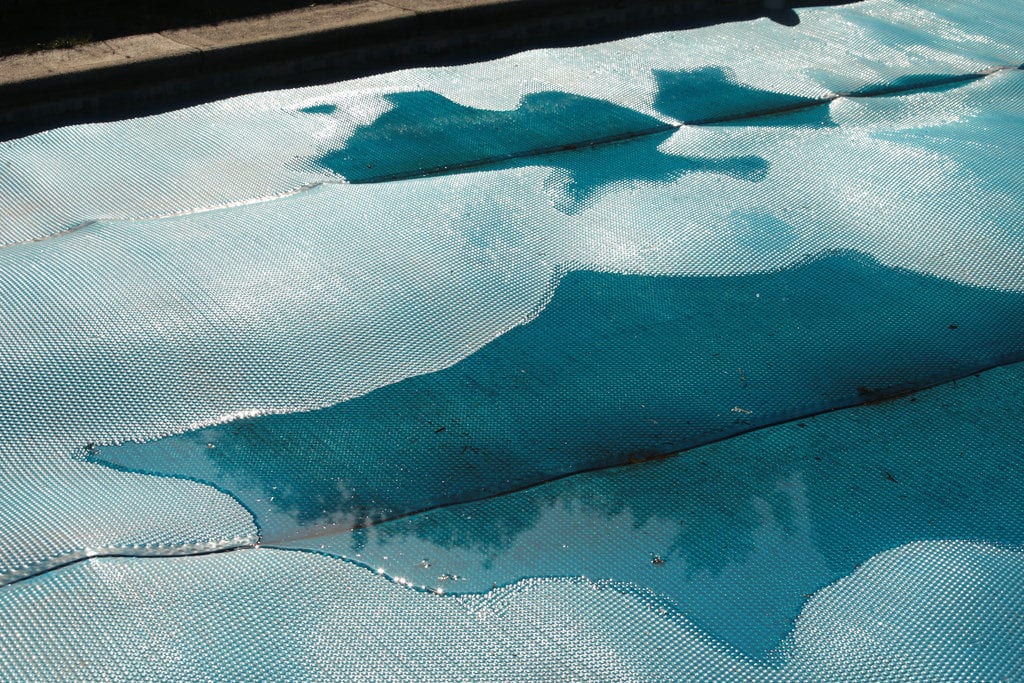


Not covering the pool
Did you know that evaporation is the reason for 75% of swimming pool heat loss?
That’s a lot of heat loss! Yet one of the most common mistakes pool owners make is forgetting that there’s an easy way to address both problems (heat loss and evaporation) at once.
And that’s by using a solar pool cover.
Here’s are a few reasons to use a solar pool cover:
- Solar covers helps draw in natural heat from the sun
- Covers create a barrier between the surface of your water and the atmosphere, which helps you hold on
to all the water that would otherwise evaporate - Solar covers help retain heat, which helps you run your pool heater less (minimizing energy use)
Not servicing your pool heater
Imagine this:
Let’s say that you’ve taken care of everything listed above, and now your pool is looking better than ever before. Surely, you’re eager to hop in and enjoy a good swim. So, that’s exactly what you do, except there’s one problem.
The water is way too cold. But how could that be?
Well, a quick walk over to your pool heater solves that mystery in no time; it’s not even on.
Worse? It won’t turn on. And you have no idea why because up to this point, it was working perfectly fine.
Could it be the power supply? Or maybe it’s the circuit board?
Doesn’t matter, because whatever it is, it’s stopping you from enjoying the comfortable swim you deserve.
/end scenario
Every year this happens to countless pool owners, yet surprisingly enough, it’s easily avoidable.
Of course, if it happens to you, you shouldn’t feel bad. Pool heat pumps are highly durable, and they can go for years without needing any major repairs. And since they work hard in the background, they’re easy to forget about every now and then.
But in the same way that a car needs a tune up and regular oil changes to maintain peak performance, your pool heater needs regular servicing.
Servicing your pool heater annually:
- Ensures that all parts and components are in good working condition
- Can prevent small issues from turning into big problems
- Helps you maintain consistent, peak energy efficiency
- Drastically lowers repair costs and reduces part replacements needed throughout
the heater’s lifetime (saves you money)
If you have a pool heat pump, we highly recommend checking out these DIY pool heater repair tips and troubleshooting hacks.
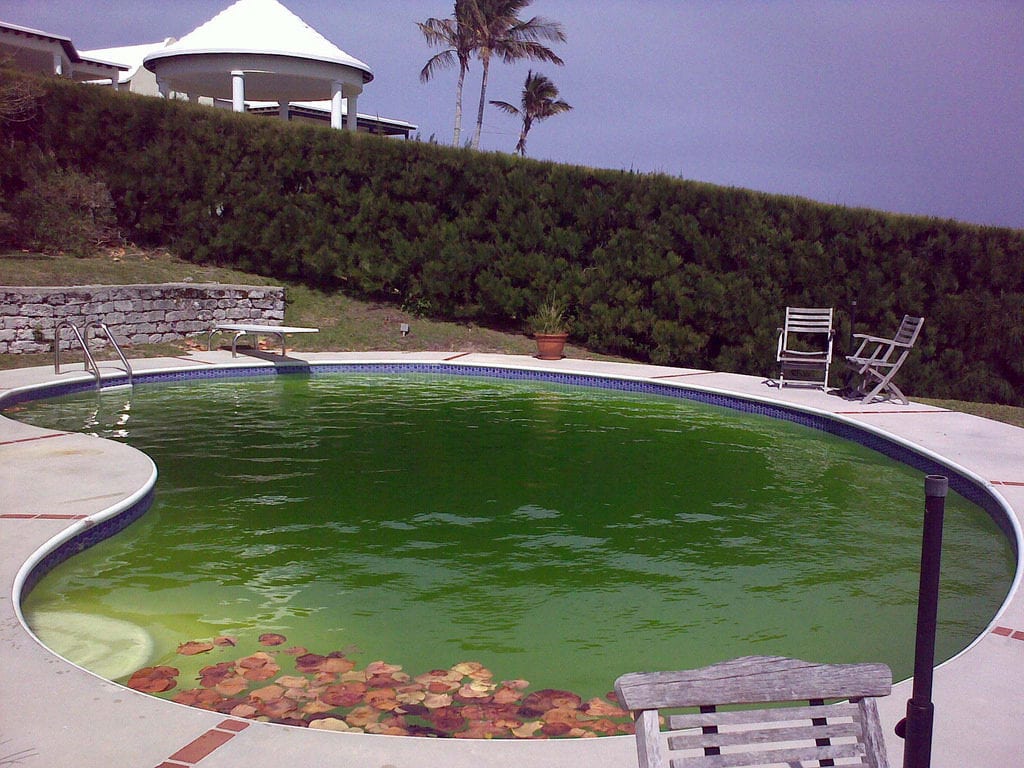


Not removing algae correctly
Since this is such a hot topic in the world of pool ownership, we’re just going to go ahead and break this up into DOs and DON’Ts
DO
- Treat your pool with the appropriate amount of hypochlorite pool shock
- Evenly distribute the shock across the pool
- Run your filter for at least 24 hours after treatment
- Set your filter to “Waste” if using a manual vacuum
DON’T
- Use an automatic pool cleaner for algae removal (algae will not stay contained in the cleaner’s mesh bag)
- Forget to run your filter after
- Stop your filter, or the treatment before water clarity has been restored
Want to learn more about preventing and removing pool algae? Check out these posts:
Best Ways To Prevent Pool Algae
Closing Thoughts
We hope this post helped raise awareness about some of the common mistakes pool owners make. If you found yourself guilty of a few, don’t worry, because you’ve already found the solutions. Now, it’s just a matter of replacing one habit with another. And the sooner the better, because who can resist the reward of saving time and money?
If you enjoyed this post, you might also like:

